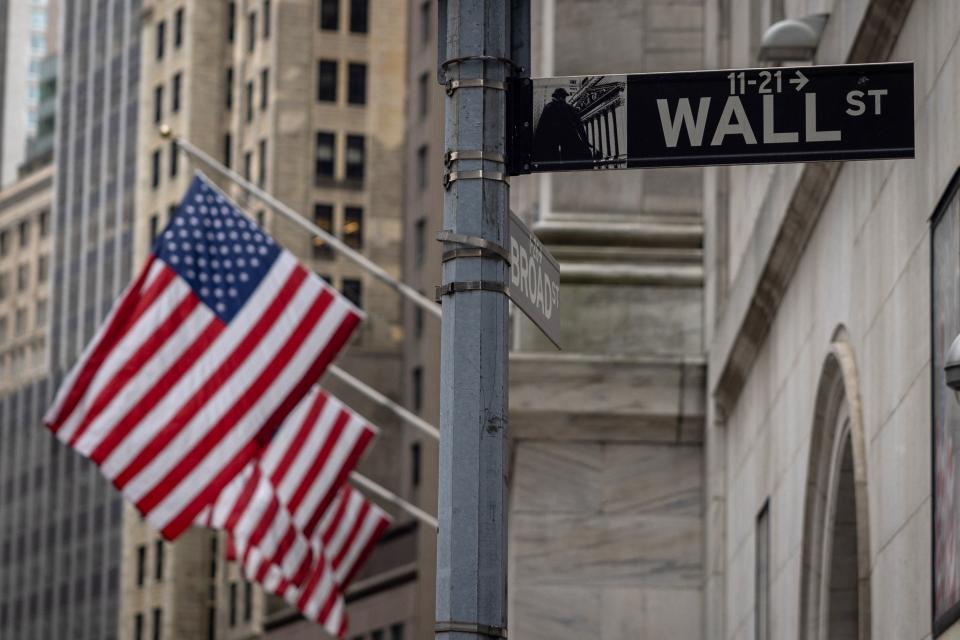
The US economy is no longer shocking Wall Street to the upside.
Economic consensus has shifted from forecasters chasing the data higher to scaling back levels of optimism as recent data shows activity cooling across a variety of metrics.
This has dampened hopes that economic growth could unexpectedly accelerate for a second straight year.
“I am having trouble getting too excited about the economy,” Renaissance Macro head of economic research Neil Dutta wrote in a note to clients on Monday.
“Conditions are fine, but I would hardly describe the situation as consistent with a meaningful acceleration.”
The economics research team at Goldman Sachs, led by Jan Hatzius, has been among the most bullish on the state of the economy over the past year. But the firm moved down its estimate for second quarter GDP to reflect an annualized growth rate of 2.7% from 3.2% on May 24 amid “weak spending momentum to start the quarter.”
Similarly, the Atlanta Fed’s GDPNow tracker — which uses data inputs from throughout the quarter to extrapolate how GDP is pacing — has moved down to 1.8% after sitting above 4% at the beginning of May.
Dutta’s Monday note followed a new reading of activity in the manufacturing sector from the Institute for Supply Management (ISM), which showed activity fell further into contraction last month.
The ISM’s manufacturing PMI registered a reading of 48.7 in May, down from a reading of 49.2 and lower than the 49.5 economists expected, according to Bloomberg data.
After entering expansion territory with a reading above 50 in March for the first time since 2022, the index has declined for the last two months.
“The drop in the ISM manufacturing index in May adds to the sense that the economy is losing momentum,” Capital Economics North America economist Thomas Ryan wrote in a note to clients.
The fall in PMIs is the latest economic data point to come in weaker than expected.
In early May, the April jobs report showed US job growth came in weaker than expected as the unemployment rate unexpectedly ticked higher. A softer-than-projected reading on retail sales in April followed this report. In late May, a decline in the second estimate of first quarter economic growth was largely driven by lower consumption.
The stock market has taken any signs of a weakening economy in stride, with all three major indexes hitting record highs in May.
The correlation between the Citi Economic Surprise index and the S&P 500 has been inching toward a negative correlation, meaning stock investors have been increasingly embracing bad economic news as good news for stocks.
Many view the current economic data as opening the door for Federal Reserve interest rate cuts while not signaling an outright downturn in economic activity. Lower rates and slower growth could still be a constructive environment for stocks.
Following the weak April jobs report, for instance, the S&P 500 rallied about 1.3%.
Bank of America US and Canada equity strategist Ohsung Kwon wrote in a note on Monday that whether economic growth deteriorates further will be key, as “bad news can turn into bad news” for stocks too.
The next test for this narrative will come on Friday with the release of the May jobs report.
The report is expected to show 185,000 nonfarm payroll jobs were added to the US economy last month, with unemployment holding steady at 3.9%, according to data from Bloomberg.
Kwon believes a print like this would keep the labor market tracking in the “Goldilocks” range — not too hot to fuel fears of sticky inflation and not too cold to heighten worries of a slowdown.
With inflation still tracking lower, many Wall Street strategists also see room for stocks to rally if a slowing economy proves to be a head fake.
“Stronger growth should also be positive for stocks,” Kwon said.


Josh Schafer is a reporter for Yahoo Finance. Follow him on X @_joshschafer.
Click here for in-depth analysis of the latest stock market news and events moving stock prices.
Read the latest financial and business news from Yahoo Finance






